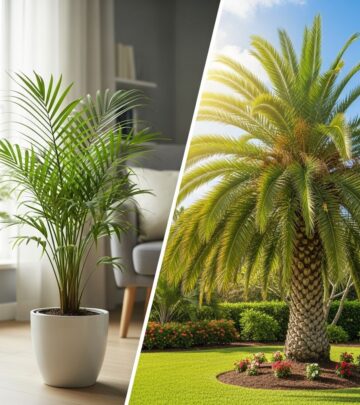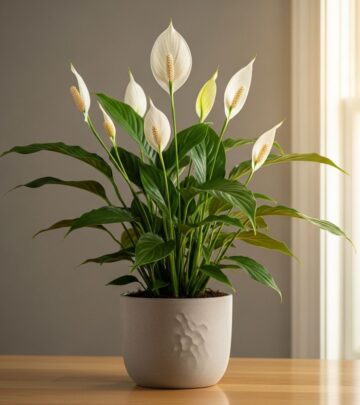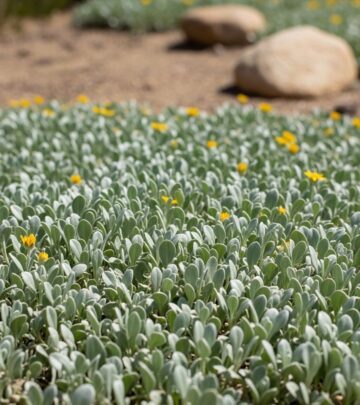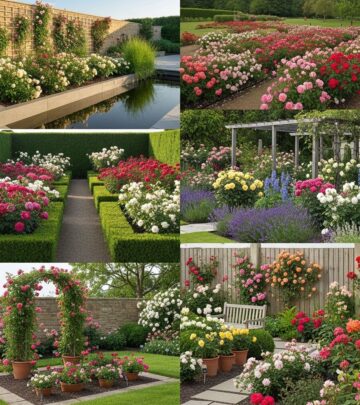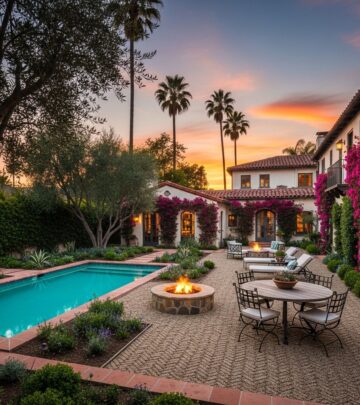A Sanctuary in the City: Julie Farris’s Brooklyn Brownstone Backyard Transformation
Strategic design and plant choices make overlooked city yards lush, versatile retreats.
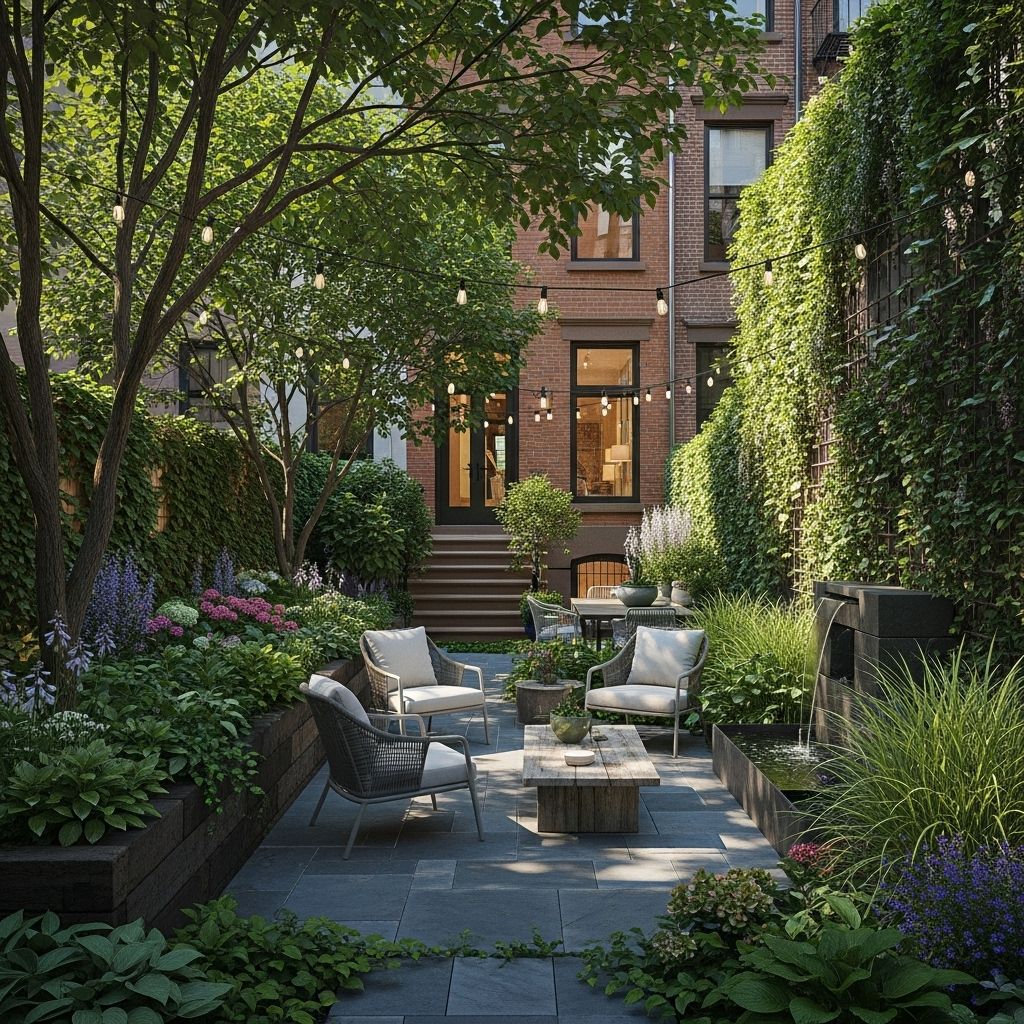
Image: HearthJunction Design Team
Julie Farris and the Art of Urban Garden Transformation
In the bustling heart of Brooklyn, landscape designer Julie Farris has garnered a reputation for turning overlooked urban spaces into lush sanctuaries. Her recent project in Carroll Gardens exemplifies her knack for maximizing limited square footage and channeling her clients’ wish lists into compact yet elegant backyard retreats. Journey with us through the step-by-step reinvention of this Brooklyn brownstone garden, where every inch is cultivated to be purposeful, intimate, and surprising.
The Challenge: Reviving the Carroll Gardens Backyard
When Farris first set foot in the Carroll Gardens backyard, she was greeted not by charm, but by complexity: months of unchecked growth, patchy soil, and an absence of privacy. For many Brooklyn homeowners, these hallmarks are all too familiar—a mix of claustrophobia and exposure. The family wanted to change everything, seeking a space for relaxation, play, entertaining, and gardening, all within less than 1,000 square feet.
The client’s wish list included:
- Private sitting and dining spaces, sheltered from neighbors’ eyes.
- Zones for children’s play without sacrificing refined aesthetics.
- Plantings that would provide color and structure throughout the year.
- Sustainable, low-maintenance solutions that would stand up to urban conditions.
Project Overview: Design Goals and Initial Assessment
Julie Farris approached the project with her trademark philosophy: treat every inch as important. Recognizing the constraints—shade, neighboring windows, and a narrow, boxed-in plot—she began by performing a thorough assessment:
- Analyzing sunlight patterns to determine viable planting areas.
- Evaluating the existing soil quality and drainage issues.
- Studying the flow between the indoors and outdoors to maximize continuity.
- Surveying privacy options given the density of surrounding buildings.
This meticulous groundwork allowed Farris to envision a garden that would unfurl in layers, offering both openness and refuge.
From Overgrown to Ordered: The Clearing and Initial Build
The first phase was bold—clearing away the tangled undergrowth that had consumed the backyard. In its place emerged a minimalist, modern structure:
- Retaining walls were constructed, subtly defining zones without visually shrinking the space.
- High-performance artificial grass was selected to create an all-weather play area, reducing maintenance needs and keeping the look evergreen.
- Ipe wood fencing and benches introduced warmth and a tactile, organic element, echoing the wooden features carried over from within the brownstone itself.
This foundation set the stage for the garden’s key design principle: a flow of spaces that feel both connected and distinct.
The Backyard Layout: Maximizing Utility and Experience
Dividing a small backyard into well-proportioned, multi-use zones is equal parts art and science. Farris’s plan emerged as a subtle choreography between open and enclosed spaces. Here’s how she did it:
- Defined gathering zone: A bluestone patio, immediately off the kitchen, is furnished for alfresco meals and evening conversation.
- Children’s zone: Set further from the house, the artificial turf area doubles as a play spot and informal lounge when not in use.
- Layered planting beds: Perimeter beds filled with a blend of shrubs, grasses, and perennials impart privacy and visual softness, masking neighboring structures.
- Integrated seating: Built-in benches along the fence line increase seating without crowding the main space.
Backyard Zoning Table
| Zone | Primary Function | Key Materials | Notable Features |
|---|---|---|---|
| Dining/Entertaining | Meals, gatherings | Bluestone, teak furniture | Proximity to kitchen, string lighting |
| Children’s Play | Active play, relaxation | Artificial turf | No-mow, soft underfoot, all-weather |
| Planting Borders | Privacy, visual interest | Mixed perennials, ornamental grasses, shrubs | Year-round texture, layered heights |
| Integrated Seating | Flexible seating | Ipe wood benches | Storage underneath, space-saving design |
Planting Palette: Four-Season Interest and Privacy
Unlike suburban gardens with room to roam, urban spaces demand strategic plant choices. Farris selected a palette of resilient, low-maintenance species designed for beauty across all seasons:
- Evergreen shrubs (such as boxwood and yew) build a year-round green backbone and screen neighboring windows.
- Flowering perennials (including nepeta, salvia, and echinacea) offer summer color and support urban pollinators.
- Ornamental grasses (like hakonechloa and panicum) bring movement and fall texture.
- Small multi-stem trees (e.g., serviceberry) infuse verticality and dappled shade without overwhelming the space.
This planting scheme was arranged not just for privacy, but to create a sense of depth—using various heights and textures to make the compact yard appear far larger than its footprint.
Creating Cohesion: Indoor-Outdoor Connectivity
One of Farris’s innovations was extending the visual language of the home into the garden. The wood fencing’s tone was chosen to coordinate with indoor wood accents, while the stone used outside mirrors textures found in the entry hall. The result is a seamless transition—a fluid boundary between living room and garden.
Features that facilitate this include:
- Large glass doors to maximize sightlines and light.
- Outdoor lighting that matches interior fixtures for a calm evening atmosphere.
- Consistent use of natural materials for finishes and furnishings.
Sustainable Solutions for the City
Long-term sustainability was built into every design choice. Farris’s approach prioritized:
- Efficient drip irrigation to conserve water.
- Locally-sourced and reclaimed materials for fencing and furnishings.
- Rain gardens and improved drainage to deal with stormwater runoff.
- Choosing plants well-suited to the local climate, reducing the need for fertilizers and pesticides.
Finishing Touches: Details Make the Difference
Beyond structure and planting, subtle details give the backyard its signature sophistication:
- Custom planters made from corten steel bring crisp definition and a rust-hued accent that echoes both the soil and adjacent materials.
- Discreet LED pathway lights guide guests without overpowering the mood.
- Scaled-down furniture, selected for comfort and weather resistance, ensures the space feels inviting at any time of day.
- Integrated benches double as storage, keeping toys and tools out of sight.
Project Impact: How the Space is Used Today
Today, the Carroll Gardens backyard is not just a visual escape—it’s an active part of daily life. The family eats outside from the first hint of spring through deep autumn, children circulate freely between home and yard, and evenings find the adults hosting friends beneath the glow of string lights. The mix of openness and privacy makes it possible to enjoy the city while feeling sheltered from it—a rare equation in dense urban Brooklyn.
Backyard Before-and-After Comparison
| Feature | Before Renovation | After Renovation |
|---|---|---|
| Privacy | Exposed to neighboring windows | Screened by layered plantings and fencing |
| Planting | Overgrown, mainly weeds | Structured, multi-seasonal garden beds |
| Play Area | No clear space | Defined turf zone for children |
| Outdoor Seating | Absent | Integrated benches, dining furniture |
| Overall Usability | Neglected, rarely used | Central to daily life and entertaining |
Frequently Asked Questions (FAQs)
Q: What are the main challenges of designing small urban backyards?
A: The chief challenges are privacy, limited sunlight, poor drainage, and maximizing usable space without overcrowding.
Q: Which plants do best in Brooklyn’s urban microclimates?
A: Evergreen shrubs, drought-tolerant perennials, and ornamental grasses tend to thrive, provided they are matched to specific sun and shade conditions.
Q: How do you create privacy in a backyard overlooked by neighbors?
A: Use strategic fencing, multi-layered plantings, and small trees to obscure sightlines while preserving a sense of openness.
Q: What sustainable landscape practices are practical for city gardens?
A: Drip irrigation, native and climate-suitable plants, reclaimed materials, and installation of rain gardens for stormwater capture are all suitable for urban landscapes.
Key Lessons from Julie Farris’s Carroll Gardens Garden
- Maximize every inch: Even tiny plots can be both highly functional and beautiful if designed with intention.
- Layer for privacy: Combining fencing with layered plantings yields privacy while maintaining a soft, natural feel.
- Make it personal: Tailor each element to the real habits and aesthetics of the household using the space.
- Invest in fewer, quality materials: Consistent, durable materials unify the space and reduce future maintenance hassles.
- Think inside-to-out: Cohesive indoor-outdoor transitions expand the sense of space and support seamless living.
Visual Inspiration: Design Highlights
- Monochrome paving and rich wood combine for contemporary, inviting edges.
- Strategically placed lighting shifts the mood from sunny afternoons to intimate evenings.
- Moving between play and rest is effortless, thanks to clever zoning and subtle vertical layers.
Julie Farris’s Carroll Gardens backyard stands as a blueprint for city dwellers craving privacy, versatility, and four-season appeal. With an eye for detail and a commitment to both function and beauty, this garden proves that urban outdoor spaces can indeed embody sanctuary, surprise, and daily joy.
References
- https://www.gardenista.com/posts/before-after-from-fishbowl-townhouse-garden-to-private-oasis-in-manhattan/
- https://www.gardenista.com/posts/garden-designer-visit-julie-farris-rooftop-meadow-brooklyn-edition/
- https://www.youtube.com/watch?v=tnK5DrMneC0
- https://www.pinterest.com/pin/landscape-designer-visit-a-small-brooklyn-backyard-where-every-detail-every-inch-is-important-gardenista-in-2022–36451078225456099/
- https://www.remodelista.com/posts/trending-on-gardenista-june-17-2016/
Read full bio of Shinta




